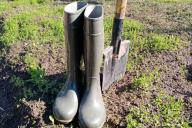Finding the right place for gooseberries in the garden can be a lot of trouble, but it will help to avoid a number of problems in the future.
Gooseberries contain pectin, vitamins B, C and E, magnesium and a number of other nutrients.
Pectin has a positive effect on metabolism, vitamins C and E strengthen the immune system and improve heart health.
Magnesium and B vitamins improve memory, help with concentration problems, and generally have a positive effect on the health of the nervous system.
With such a track record, gooseberry is a desired shrub for many gardeners. But far-sighted gardeners immediately have a question about where to plant the plant so as not to harm other crops.

When choosing a location, it is important to consider which plants gooseberries do not get along well with. The list of undesirable neighbors includes black currant. The bushes suffer from one pest - the moth.
Raspberries also have a negative effect on gooseberries. They suppress low-growing bushes, take away moisture, making the berries small and dry.
Mutual negative influence is observed when gooseberries grow next to grapes or strawberries.
Hyssop and fennel do more harm to gooseberries than they do to them. Thus, the roots of the plants secrete substances harmful to the bush, slowing down the development of the crop.








